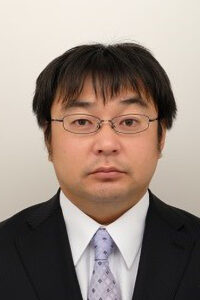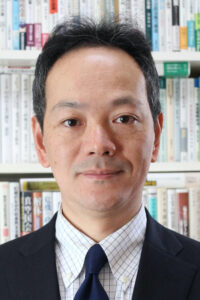Will Japan Innovation Party stay in Osaka or expand nationwide? Policy, organization, and the face of the party are being questioned

Osaka is Kansai’s largest economic bloc, but the central political parties tend to see it as a declining province. The Japan Innovation Party, born in Osaka, responded to the voters’ strong desire to elect someone who would wholeheartedly consider Osaka’s interests. In the future, it is possible that support will increase as a political party that responds to the disappointment of urban voters.
Photo: macha / PIXTA
Zenkyo Masahiro (Professor of Kwansei Gakuin University) vs Machidori Satoshi (Professor of Kyoto University)
Going beyond the “political party of Osaka”
――The opposition Japan Innovation Party (JIP) has grown in the 2022 Upper House election and the 2023 unified local elections. Meanwhile, the ruling Liberal Democratic Party (LDP) lost the by-election for Wakayama Constituency No. 1 in the lower house and the Nara Prefectural gubernatorial election. Other opposition parties, including the Constitutional Democratic Party of Japan (CDPJ), are also stagnant. How do you analyze the current political situation and the reasons for the JIP’s growth?
Machidori Satoshi: I have come to see commentaries that the current political situation is a “neo 1955 System” similar to the former “1955 System[1]” where the LDP dominant-party system continued. However, despite the superficial resemblance, I believe that the current LDP is not as strong as before in terms of stability in its support base and other factors. While supporting the LDP’s foreign and security policies, voters who have reservations about domestic policies such as economic policies became the driving force behind the birth of the Democratic Party of Japan (DPJ) government in 2009. There are probably still many such voters. I think that the JIP is becoming a vessel for those people’s votes.
Not too long ago, there was a condescending view, mainly in Tokyo, that “the JIP can only collect votes in Osaka, can’t it?” However, I have the impression that the JIP is already growing beyond Osaka and the Kansai region [into a national political party].
Zenkyo Masahiro: I basically agree with you. However, I’m skeptical of the line of argument that the JIP made significant progress in the recent unified local elections. While it was reported that the JIP’s local assembly members and heads exceeded their target of 600 nationwide, considering factors such as the proportional votes in the 2022 Upper House election, wasn’t this a feasible goal to begin with? What caught my attention were the election results in the Kanto region[2]. In some cases, votes were concentrated on a small number of JIP candidates. If they had fielded a slightly larger number of candidates, they might have gained even more seats.[3] Looking at the total number of local assembly members, the CDPJ still has more. The original number of local assembly members from the JIP was low, so it’s important to note that their apparent growth is relative. I assume that voters’ views of the JIP changed critically around the time of the 2021 Lower House election. At that time, the largest opposition party, the CDPJ, unified its candidates with those of the Japanese Communist Party (JCP), among others. However, many candidates from the CDPJ were unable to win against candidates from the LDP in district elections. On the other hand, in Osaka’s constituencies, all candidates from the JIP triumphed over candidates from the LDP. This result had a significant impact. As expectations for the CDPJ declined, the view emerged that the party capable of countering the LDP might be the JIP, and this perspective has gradually gained traction, as I perceive the current situation.
According to my survey after the 2022 Upper House election, only about 10% of LDP supporters saw the CDPJ as an alternative to the LDP, against about 30% for the JIP. The results of this year’s unified local elections are an extension of this change in public opinion.
Machidori: It’s not uncommon for the approval ratings of parties that win elections to subsequently increase, but is this phenomenon particularly pronounced for the JIP?
Zenkyo: The changes after the 2021 Lower House election were somewhat alien. A “feeling thermometer” is one metric to gauge voters’ evaluation of parties, with higher values indicating more favorable sentiment. Until 2021, the average of the feeling thermometer for the JIP hovered around 35 degrees. However, after the Lower House election, it surpassed 50 degrees. Such a rapid change is unusual and made me believe that there might have been a shift in people’s view of the JIP. I also heard that the average of the feeling thermometer for the JIP was relatively high in the survey conducted by other scholars after the 2021 Lower House election.
Local parties prioritize representing the interests of their respective regions. The fact that the party headquarters of the JIP is in Osaka is evidence that the JIP intends to represent “the interests of Osaka.” In that sense, there used to be concerns that moving the JIP’s headquarters to Tokyo could result in waning support in the Kansai region. However, now, even without emphasizing itself as Osaka’s party, it is in a position to win in the Kansai region.
Machidori: It’s like comedians from Osaka who have successfully expanded into Tokyo, like Downtown and Akashiya Sanma (laughs). Even though those people have lived in Tokyo for a long time, there is an atmosphere that makes you think they are still living in Osaka.
Zenkyo: I agree (laughs).
Not active support
Machidori: Already, many voters are beginning to see the JIP not just as a local party in Osaka, but rather as a challenger to the LDP on the national stage. However, at present, it’s merely being supported as an alternative to the LDP, and not necessarily due to JIP’s own policies and attractiveness. It seems that the party is currently at a crossroads, aiming to transition into a national political party.
Zenkyo: Osaka Ishin has solved the difficult problem of coordinating between Osaka Prefecture and Osaka City by making the functions of the political party work, and many people in Osaka supported the JIP for that reason. However, it is difficult to do the same in regions and municipalities other than Osaka.
Machidori: For people in Tokyo, the JIP seems like a political party that suddenly appeared, and they may not understand it well. However, what the JIP originally wanted to achieve, as the parent organization Osaka Restoration Association (Osaka Ishin no kai, hereinafter Osaka Ishin), is relatively clear.
Osaka has a long history and pride, a large economy, and human resources. However, the LDP and other national parties tended to see Osaka as one of the declining regions. That’s why the Osaka voters who felt this way wanted to “choose a candidate who thinks hard about Osaka more than anything else.” It was Osaka Ishin who scooped up their thoughts. And Nara and Hyogo Prefectures next to Osaka also became JIP governors. The evaluation of the JIP will change depending on how well they can produce results.
Also, it is not necessarily the case that voters will evaluate parties that have achieved results in rural areas as having the ability to take charge of government. In fact, there was an era of progressive governors when the Japan Socialist Party (JSP) and the Japan Communist Party (JCP) were in charge of urbanized prefectures such as Tokyo and Osaka. It is not the case that the JSP and JCP’s ability to take charge of the government has improved. This is because their foreign and security policies, which are important in national affairs, were perceived as unreliable.
Can the JIP differentiate its policies?
Zenkyo: In order to show its presence in national affairs, the JIP might be considering the possibility of adopting a stance more right-leaning than the LDP, particularly in areas such as diplomacy and security. Actually, there is a study that indicates that the JIP tends to adopt a more conservative stance than other parties in local assemblies. But I don’t know if such a strategy would be good for the JIP.
Machidori: The JIP is not expected to be an alternative in diplomacy and security. With regard to social and economic policies, the JIP says it will “eliminate [administrative] waste,” but that alone is not an appealing point at present. The JIP, for example, will not grow sufficiently unless it organizes discussions such as, “Let’s invest in future generations. To do so, let’s reduce waste.” All voters are vaguely aware that the government cannot run only by cutting waste.
Zenkyo: I think that the relationship between political parties and voters is often discussed in terms of the relationship in which parties first indicate the direction of policies and other matters, and voters respond to them. However, in the case of the JIP under the national-level politics, voters’ expectations that “they might do something” come first, and the JIP seems to be determining what it should do through several trials after that. I think voters are asking for something from the JIP that will become a core policy that goes beyond “painful reform (mi wo kiru kaikaku).”
Machidori: It is a bad move for the JIP to go to the right of the LDP in diplomacy and security. On the other hand, there is a sense of stalemate even if we go left on social and economic policies.
This is related to the fact that the center-left political parties are struggling not only in Japan but worldwide.
At the end of the 20th century, the British Labor Party and the Democratic Party in the United States came up with the idea of a “third way” to use the funds obtained by actively responding to globalization for domestic redistribution. Japan’s DPJ was also in a similar direction. However, after the Global Financial Crisis (GFC) in 2008, the tide of anti-globalism increased, and today, the Third Way line has become almost untenable.
In such a situation, the policy choice of the left will be either to steadily increase expenditures with the resolution of loose budgets, or to emphasize the realization of new liberal values such as same-sex marriage. However, due to the emergency situation of the spread of the new coronavirus infection, the LDP took a policy position of “let’s just spend more and more money” without thinking about future finances. Just like the office workers who secure a location for cherry-blossom viewing a week in advance, the LDP has occupied the location for a long time (laughs).
As a result, the CDPJ has no choice but to focus on realizing new liberal values. However, it is difficult to create a majority with new liberal values because of the diversity of opinions, and it is sluggish as a force. As a result, it is the JIP, not the left, that remains an alternative to the LDP. Still, I think it will be tough for the JIP unless it creates a picture of the current generation or the future generation, not the right or left of the LDP.
Weak policy-making capacity
Zenkyo: In order to establish a direction as a national-level party, it is necessary for the JIP to have the basic capacity to manage a political party. However, the current JIP seems to have serious problems in that respect. While the LDP has plenty of capability to run a government, few would see the JIP as a more mature party than the LDP.
Party governance has been on the JIP’s agenda since its founding. Currently, the JIP often mentions party governance reforms, but it is inevitable to face criticism for having done little about governance reformation until now. Until recently, there was little room for the JIP to play an active role in national-level politics; thus, there may have been little concern for the JIP’s governance. However, now that the number of Diet members of the JIP has rapidly grown, it is necessary for the JIP to mature quickly as a national-level party.
Machidori: Osaka Ishin was originally a local party established by members who left the LDP (Osaka Prefectural Federation)[4], so Osaka Ishin inherited the LDP’s know-how and was able to make arrangements as necessary. I think the bottleneck for the JIP after that is that there are almost no people from the LDP in national affairs.
In the case of the DPJ as well, the fact that there were a considerable number of Diet members from the LDP has clearly improved the level of trust in elected officials’ ability to run the government. Political party organizations are similar everywhere. With the LDP’s know-how, such as what kind of organization to create and how it should be operated, it would have been able to make good use of it.
Therefore, it will be difficult if people who have experience in national affairs in the LDP do not join the JIP. Building a party organization from scratch is not only expensive, but extremely difficult.
Zenkyo: If the JIP pulls out LDP Diet members, it might be a good idea to target younger members. He or she may have both strength for a politician and innovative perspectives, but may n0t be effectively demonstrating their potential within the party. If the JIP can attract these kinds of members, its policy-making competence will increase, because it could gain various information resources that also include those related to organizational management.
Of course, I think the JIP is also considering bringing in Diet members not only from the LDP but also from other parties such as the CDPJ, and further strengthening cooperation with the Democratic Party for the People (DPP).
Machidori: The CDPJ and DPP still have quite a few members who joined from central ministries during the DPJ era. However, just attracting such people is not enough. They have to be prepared for the negative image of the DPJ[5] to flow into the JIP to some extent. It is questionable whether the JIP can overcome this.
Zenkyo: To what extent does Baba Nobuyuki, the JIP party leader, regard organizational development as a national-level party to be an urgent issue? Maybe Baba doesn’t see the need so much.
Machidori: Based on Prof. Zenkyo’s remarks, the JIP has become a system that can gain support outside of Osaka, but it has not reached the point where it is trusted. The JIP needs a leader who can be seen at a glance as head of a party that considers social and economic benefits not only for Osaka but for the entire country. It’s just an image and a symbol, but it may be necessary to appoint a top leader who doesn’t speak the Osaka dialect.
I see that the inability to create policies and the presence of laxity and leniency in organizational management ultimately share the same underlying root. Originally, political parties have things they want to do first, and they create organizations to realize those goals rationally. Osaka Ishin had relatively clear objectives, but the JIP’s intentions are not yet visible. While they gained support through the missteps of the LDP and CDPJ, the truth is that the JIP members themselves still don’t know what specific measures they should propose to garner even more support.
Possibility of a political party for urban areas
Zenkyo: One direction the JIP could take to expand supporters is becoming a party that represents the interests of urban areas. The likelihood of the JIP gaining more supporters in rural areas than the LDP is limited. I think, if the direction of change for the JIP is from “Osaka-centric party” to “urban-focused party,” this would be something many people would accept without much discomfort.
Machidori: There has always been a sense of disappointment that the LDP has not implemented the policies desired by voters in the big cities, and in the past the New Liberal Club and Japan New Party tried to represent those interests. While those were national political parties created by members of the Diet, the JIP was a party created in Osaka, and the notable difference is that it began with the claim it would solve problems in the region (the big city of Osaka).
Zenkyo: Actually, the JIP advocates free education. This policy may attract support from households with children, because they spend a significant amount of money on education in urban areas. One of the reasons why the JIP calls for free education may be that the JIP sees it as an issue in urban cities, including Osaka. Can the JIP advance its policy direction to urban development, or to the country’s sustainability? If it could, the JIP would be able to gain more supporters. However, it is hard to imagine that the JIP has such an outlook.
Machidori: I think you’re right, but the JIP’s roots lie in the idea of decentralization, where policies shouldn’t be uniform across the country. It becomes a constraint when formulating national policies. There is no problem with the organizational principles of the LDP and other conventional national political parties, even if the headquarters rejects the policies made by the local branch organizations or prioritizes the policies of the headquarters. However, in the case of the JIP, it becomes self-denial.
After all, turning a local party into a national party is not an easy task. Looking overseas, there are local parties in Europe and Canada that have remained strong in those regions, but I can’t think of any cases that have successfully become national parties. When local parties are influential in national politics, they basically form coalitions. That’s why I think it’s more realistic to team up with parties in each region than to use the name JIP and work nationwide.
However, even in that case, if I were an LDP member, I would attack by saying, “the JIP says different things depending on the region, but is it okay?”
Zenkyo: This is a point that other parties can easily criticize.
Machidori: If the JIP is the headquarters, and the branch offices in each region are placed under it, it will be impossible without a solid central organization. The LDP allows a high degree of freedom for regional organizations, but it is very difficult for the JIP to maintain party unity while allowing a much higher degree of freedom than the LDP.
Zenkyo: It requires either a person who can demonstrate strong leadership or a solid organizational foundation.
Difficulties faced by franchise party
Machidori: To put it a little more logically, there is not an absence of parties that use the same name nationwide but hold different regional stances. In political science, this is referred to as the “franchise party model (Parties as Franchise Systems).” This concept can be broadly understood in the context of American parties and is also applicable in Canada. It’s like a franchise chain store with the same sign but many local menus.
But Japan has no precedent. When people think of political parties in Japan, the image of European parties after the 20th century is overwhelmingly strong. It is an image of thinking the same way from top to bottom and acting in unison, based on specific principles and interests. Even the LDP has used it as a model, so if you try to create a different type of party, you will be asked, “Are you okay?”
Zenkyo: The LDP seems to have a certain degree of autonomy on a regional basis as well.
Machidori: At the heart of the policies advocated by the LDP is the greatest common denominator of grassroots conservatives among local assembly members and local activists. You could call it a “catch-up modernization” mentality, but it has suppressed regional variations. I think one of the reasons why the JIP appeared in Osaka is that Osaka, which has one of the strongest identities in Japan, no longer fits into such a greatest common divisor.
Therefore, in order for the JIP to become a national party, it is also possible to set the minimum common items and let each region decide the rest. The doshu-sei (system of a broader regional government) was a convenient system for that purpose. Whether or not the public will accept it is another matter.
Zenkyo: I think that one of the reasons it is difficult for the JIP to become a franchised party is the relatively high cost involved. More resources are required for the JIP to grasp the diverse needs of each region. Adapting policies to meet the needs of each area poses greater difficulties than implementing them uniformly nationwide. In other words, the JIP has to do something more difficult than what the LDP is doing. As the LDP has grassroots networks of its supporters in each region, it may be possible to grasp the various needs through these networks. However, in the case of the JIP, it would be difficult to do if the party did not have an organization with specialized analytical skills including gathering of various types of information.
Can the JIP break away from its founding political party?
Machidori: Like the LDP and the former DPJ, a large political party that takes power is basically like a multi-tenant building. Many people want to think of it as their own building (where people of the same mindset live), but in reality, people with different ideas are committed to the party for various reasons. There are various reasons for this, including low tenant fees and high convenience.
Even if (the party) is a multi-tenant building, decision-making by residents (party members) is still necessary. As the diversity of tenants increases, it becomes difficult to unify intentions within a multi-tenant building. In fact, the DPJ did so and collapsed.[6] Partly because of that, the opposition parties started to purify their claims, even if they were small. On the other hand, the LDP is a multi-tenant building, but the rule is clear that “(even those who oppose) follow the decisions.”
The problem is how to create that decision-making mechanism. Priorities must be set in order to make decisions. What is important is where the logic for that comes from, who presents it, and (as a party) makes it follow. Reasoning is something that is said to be a unified policy direction or guiding principle to some extent. Without it, I think the JIP will be out of control when the organization expands.
Zenkyo: Another feature of the LDP is that intra-party decision-making procedure is relatively stringent, isn’t it?
Machidori: There are some procedures that silence the party. In other words, the LDP is a “captive of procedures” (laughs).
Zenkyo: I have the impression that the JIP often makes decisions as a party or mobilizes its organizations without going through sufficient intra-party procedures. Decisions in the JIP seem to be made based on some people’s “voice of authority.” Such a decision-making approach is certainly swift, however, repeatedly disregarding fair procedures in decision-making will erode the foundation of the party organization.
Machidori: Ito Hirobumi (1841–1909) with his Rikken Seiyukai (Association of Friends of Constitutional Government) and Yoshida Shigeru (1878–1967) with his Jiyuto (Liberal Party, 1950) were no exceptions. Any party tends to be initially decided by the “arbitrary decision” of its founding generation. Long-lasting parties replace their decision-making criteria with procedural ones. In political science, this is referred to as “institutionalization.” Whether such a phenomenon will occur within the JIP is still uncertain.
However, this doesn’t happen automatically. It depends on whether a significant number of people believe that the organization is worth preserving even as generations change. It is impossible for a group of politicians who simply think, “If I join the JIP now, my chances of winning will increase.” To put it bluntly, politicians who are convinced that their self-interest aligns with the interests of the party, the nation, and the world are the ones worthy of the profession of politics.
Outcome of the next Lower House election
――Will JIP lose momentum in the next Lower House election?
Zenkyo: Assuming the current situation, I expect that the momentum of the JIP probably will not slow down, but it is also unlikely to surge dramatically. When it comes to the outcomes in electoral districts, I believe the focus should be on Hyogo and Nara rather than Osaka. In the results of Hyogo’s unified local elections in April 2023, there has been a notable swing vote from the LDP to the JIP. Additionally, in Nara, a JIP-endorsed candidate won in the prefectural governor election. The number of JIP candidates who defeat LDP candidates is likely to increase in electoral districts outside Osaka Prefecture, because the JIP’s popularity had been trending upwards overall in the Kansai area. The more candidates from the JIP who win in areas outside Osaka, the more the momentum of the JIP will grow.
Machidori: As I mentioned earlier, at the time of the Upper House election in July 2022, I think the view that the JIP was the challenger to the LDP was almost settled. I think this trend will only intensify, not weaken. It is difficult to expect much from the CDPJ in terms of policy, but there are still many unknowns for the JIP, so I think it will continue to grow for a while. Whether the JIP will continue to grow and compete with the LDP for power over the long term depends on how the JIP comes out, so honestly, it’s still uncertain.
In fact, I think the outcome of the next Lower House election will depend on how seriously the LDP’s coalition partner Komeito is willing to cooperate with the LDP in the election. I wonder if the dispute over Tokyo’s election cooperation will spread to the whole country, or will it eventually converge.
In any case, in addition to its home base in Osaka, the JIP has the potential to win in Kobe, Nara, and Kyoto, which are directly connected to Osaka by private railway lines in the Kansai region. The same thing may happen in the metropolitan area. Of course, if Komeito actively supports the LDP, I don’t think it will go that far.
Zenkyo: Currently, the JIP seems to be planning on running a large number of candidates in small electoral districts as an electoral strategy, with the goal of increasing their share of the proportional votes. The LDP is most pleased with this strategy because the votes for parties opposing the LDP are split.
Of course, the JIP is more likely to win more seats, so it’s a rational idea for the JIP. However, in the end, the JIP will not be able to win in electoral districts, and the growth of support will also reach a plateau. In that sense, I believe whether the JIP has the courage to abandon the strategies typically employed by smaller parties will be a key point in the future.
Moderated by Kiyonaga Yoshihiro, Social Affairs Department, Yomiuri Shimbun Osaka Headquarters
Translated from “Osaka domarika, Zenkoku shinshutsuka? Towareru seisaku, soshiki to to no kao (Will Japan Innovation Party stay in Osaka or expand nationwide?: Policy, organization, and the face of the party are being questioned),” Chuokoron, August 2023, pp. 18-27 (Courtesy of Chuo Koron Shinsha) [September 2023]
Keywords
- Kiyonaga Yoshihiro
- Yomiuri Shimbun
- Zenkyo Masahiro
- Kwansei Gakuin University
- Machidori Satoshi
- Kyoto University
- Japan Innovation Party (JIP)
- Nobuyuki Baba
- Osaka
- Osaka Restoration Association
- Osaka Ishin no Kai
- Liberal Democratic Party (LDP)
- Constitutional Democratic Party of Japan (CDPJ)
- Democratic Party of Japan (DPJ)
- Japan Communist Party (JCP)
- Japan Socialist Party (JSP)
- Democratic Party for the People (DPP)
- third way
- decentralization
- free education
- franchise party




